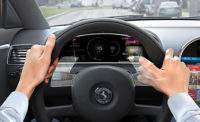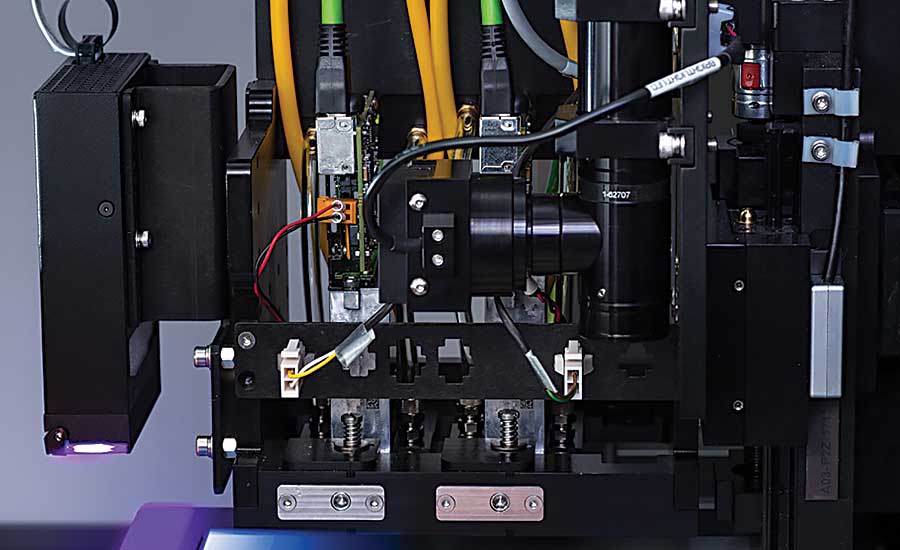Illuminated Steering Wheel Equipped With 3D-Printed Electronics




Production-ready, 3D-printed automotive parts have been slowly entering the market the past few years. Now, they’re as important as the thousands of metal and plastic parts produced using traditional casting, injection molding, stamping and machining processes.
Techniplas LLC, a global designer and manufacturer of automotive products and services, is well aware of this trend. Early in 2018, the company began an Open Innovation Program for 3D printing companies to validate and mainstream their additive manufacturing equipment for the automotive industry. Nano Dimension Ltd. joined the program that year to make known its capabilities for prototyping and manufacturing 3D-printed electronics such as conductive components, encapsulated sensors and smart surfaces.
By the end of 2018, Techniplas unveiled a unique steering wheel concept that combines its proprietary cognitive smart lighting technology with electronics printed on Nano’s DragonFly Pro 3D printer. Engineers at Techniplas use this machine to directly print conductive paths into the steering wheel in one step.
The engineers like that the printer’s two heads enable it to concurrently print with nano-silver and dielectric polymer ink. Another benefit is being able to 3D print common PCB characteristics, like vias and through-holes, without subsequent etching, drilling and plating.
Powering the DragonFly is Switch software, which lets users adjust many characteristics of the 3D file, such as layer thickness and order, conductor width, punching, rotation, and the shape or object outline. The software also has an interface that displays a detailed and accurate rendition of a design’s structure to facilitate a precise 3D print job.
Experts at both companies are hopeful that combining smart lighting with additive electronics will shape and transform the future of mobility. They’re convinced that merging these technologies will promote the creation of customized and short-run functional electronics like conductive geometries, PCBs, molded interconnects and other devices.
“We are excited about all the new applications that the cognitive steering wheel concept can bring to our [automotive] customers,” says George Votis, Techniplas founder and chairman. “[This] concept is just the beginning of a journey that we believe can shape the way electronics, sensors, antennas and smart illuminations are designed and manufactured for the connected car era. We are thrilled to be the first with this capability in-house.”
According to Amit Dror, CEO at Nano Dimension, the capabilities of the DragonFly Pro are a natural fit within the innovation program. He says the printer gives carmakers the flexibility to print an entire circuit board or just part of a connector. They can also develop, on the fly, the board’s radio frequency and digital sections in parallel to test concepts.
“Through [our] collaboration [with Techniplas], we hope to accelerate the development of auto-centric innovative products like this steering wheel concept,” notes Dror. “[It] can be quickly entered into the market and enhance the driving experience.”
In a separate project, Techniplas engineers recently developed a concept vehicle that demonstrates several advanced capabilities. One is a seat back that shows how additive manufacturing can reduce assembly time, part count, material usage and overall cost without any performance degradation.
The concept vehicle highlights the expanding capabilities of the company’s Techniplas Prime e-manufacturing platform. It leverages the company’s core engineering expertise and manufacturing facilities, together with dozens of its qualified manufacturing partners, such as Nexa3D, NXT Factory and ParaMatters.
For more information on machines that create 3D-printed electronics, call 508-475-0025 or visit www.nano-di.com.
Looking for a reprint of this article?
From high-res PDFs to custom plaques, order your copy today!









